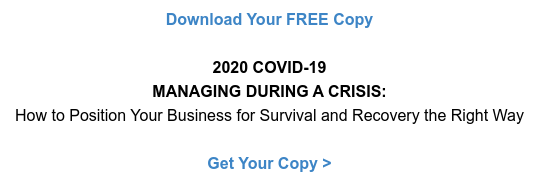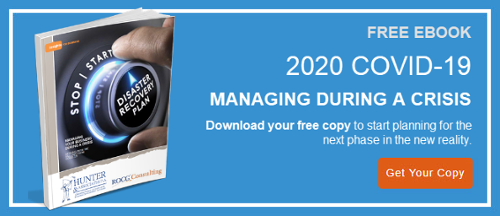
A professional service firm such as an engineering design firm or construction engineering and inspection firm can be thought of as a rocket ship. Looking at the business as a rocket ship, it gets easier to remember and share the elements of developing a successful business.
Like a rocket ship a business has two basic parts, the engines that power the ship, and the guidance systems to set course. Our rock ship has five engines and four guidance systems.
Thinking back to when you first started your firm, if you did not go through the checklist you see below formally, you did so informally.
These are the engines that power your rocket ship professional services firm.
Services
What are you offering your clients? There is no big problem here. You knew you were offering engineering design services in the areas you are competent in and where you were credentialed, registered, and certified.
Marketing and Sales
Here, too, you had an idea of the projects you could go after and those you would be competitive to work. A new firm often has clients that are a Prime Contractor which have ongoing marketing and sales efforts that you can benefit from as a member of their team.
You will create a basic website, firm brochures, and business cards. These will be helpful as you then make appointments with District Directors, Project Managers, Procurement folks.
Finance
Hey! Over time you have some savings, a credit card, and a second earner in the family. If you total it up, you could go nine months before you received that first check. I say “nine months” because:
- one month to identify work
- one month to pursue and propose
- one month negotiate and get work under contract
- two months to get the go-ahead to start
- one month to do the work
- the following month you send out your first invoice
- and the next month, if you are lucky, you get paid!
If you hit the ground running with an established relationship with a Prime Contractor or a Government agency and the ability to work/bill/ collect, it is possible to reduce it to three months
In this case, there is no need for a line of credit or a bucket of cash to get this little rocket fired off
People
When starting your firm, thank goodness you probably do not have any employees to deal with… yet. No human resource concerns, no fringe benefits, no supervision, nor payroll. It is just you, maybe a partner, and a contract employee (as-you-need-them). That’s it.
Systems and Procedures
Just as you started with your service offering, the systems and procedures you start with are defined for you. Software design, professional and regulatory standards and guidelines are part of everything you do for your customers. As to internal processes, with Microsoft Office and QuickBooks, you are good to go
And how about the guidance system…
As you started your firm:
 Culture
Culture
– Your small firm likely has no employees, which means there is little reason to be concerned about culture. (Yet)
Structure
– Again, if your firm consists of just you, a hard-working entrepreneur, the structure is simple.
Strategy
– Survival is a highly motivating strategy. If you can stay in business for 24 months, the odds are that you will stay for 25 years!
Vision
– Not quite yet. Let’s worry about this later.
That’s it – no business consultants with fancy certifications… you are on a roll!
And then it happens. Something interferes with this nicely wrapped package!
YOU MEET WITH SOME SUCCESS!
…And even worse
You HIRE YOUR FIRST EMPLOYEE

In which case, you have a list of new tasks to perform. I will break them down based on the work needed for each rocket engine:
Services
Add another resume with compatible services that keep your firm’s offerings close to home but maybe with qualifications that add to your service offering a bit.
No need for a new website page quite yet.
Marketing and Sales
Add a headshot photo to the website. Utilize the new person’s contact list to existing CRM database for clients and contacts.
You might wait until you are so overworked that the new hire offers to “save the day.” In which case, there is not much need to change your marketing and sales plan now… but you will soon.
Finance
Now you have payroll to worry about. When there was only you, or maybe a founding partner, if cash got tight you might consider skipping a paycheck. You cannot do this with an employee, even if you would like to sometimes.
People
You now have an HR department, even if it is just you wearing another hat. Fortunately, there are affordable outsourcing HR and bookkeeping solutions that keep up with payroll taxes, group insurance, payroll forms and filings and offer a virtual site for employees.
Now you must have a basic employee handbook/manual, even if you have only one or two employees. This too can is available affordably and outsourced. Then there is a mind-numbing task for any firm leader – the “job description”.
There is the matter of supervision and motivation but a professional service firm such as a design engineering firm has an advantage over other types of businesses. The folks that pick engineering as a career are motivated by professional goals, commitment to quality, customer service and professional demeaner. Your new employees may not be devoted to you and your firm, but they are devoted to the same causes you are and that will be enough for the short-term.
Systems and procedures
Timekeeping, budgets, and job costs now become part of your occupation. If you have less than five or so employees, you can get by with a rudimentary time and billing software and utilize managing-by-walking-around (MBWO) If you are unfamiliar, Tom Peters wrote about this in his book “In Search of Excellence.”
The guidance systems on your rocket ship professional firm become more involved. You are no longer a simple one-person show – but that is the name of the game when you grow.
Culture
Whether you like it or not, with a new employee, you now have a “culture.” It comes with having human beings other than yourself involved in your firm. Whether you deal with it or accept it, you have it. “Business culture” refers to the beliefs and behaviors that determine how a company's employees and management interact and handle outside business transactions. Often, business culture is implied, not expressly defined, and develops organically over time from the cumulative traits of the people the company hires.
Structure

Pull up PowerPoint on your computer and draw your first organizational Chart, if you do not, it will draw itself. And you may never get accustomed to the informal organizational chart that humans are prone to fall into.
Download the organizational chart PPTX you see here >
Strategy
This is where you set down in words (and in a big picture view) what you want to happen to your firm.
One way to think about strategic planning is that it identifies any gaps between a current state and desired future state, and then dictates how to close those gaps — how you get from where you are to where you want to be.
Write your strategy in terms that all can understand so that even if you were to disappear, everyone that worked for you would carry on like you would have them do. (Good luck with that.)
Entrepreneurs are for the most part, tactical geniuses, and strategic idiots.
Vision
Or… as George Herbert Walker Bush called it “the vision-thing.” Even worse than strategizing is visioning. Why can’t people just do their job, depend on you to be fair, to take care of things and not worry about the future? Why do people worry about where they stand in the scheme of things?
But even engineers have internal lives.
A vision inspires action. A powerful vision pulls in ideas, people, and other resources. It creates the energy and will to make change happen. ... A vision is a practical guide for creating plans, setting goals and objectives, making decisions, and coordinating and evaluating the work on any project, large or small.
A clear vision for your firm keeps your employees coming to work for you rather than going elsewhere.
Just a word about an internal vision - a vision for you, the entrepreneur, firm leader, and head cheerleader. An internal vision, in your head, will motivate you to come to work and push forward. If you do not have one already here is a default vision “To build a firm that that runs itself.” On the day, this vision is realized you will then become the chairman of the board and an investor.
Currently, you have a choice to be optimistic – or be pessimistic.
Let’s be optimistic!
- A vaccine will be created, and it will be effective.
- Immunizations will be widely used.
- There is no structural problem in our economy – this is not like 2008/2009 with the banks having gone berserk and an irrational exuberance in house buying.
- The recovery – when it comes might be quick – maybe not V-shaped but not like the recovery after 2009 when nobody, not even the FEDs, knew we were recovering.
- America will have a major infrastructure bill passed. (I know we have all been expecting one for what seems like FOREVER)
- More government stimulus packages will be offered.
If you are pessimistic:
- The virus will not be stamped out and the pandemic will continue with ineffective interventions
- Uncertainty will continue with questions about
- Will our relationships with our governmental clients change?
- Will I face shortages of people that I need in my employ?
- If you deal with more than one state, will it get “weird”? (Florida v. Massachusetts as an example)
- What regulatory shifts will happen?
Which will you choose?
You are welcome to reach out to me to talk about how you will grow your firm and stay compliant.
In the midst of chaos, there is also opportunity.” - Sun Tzu






